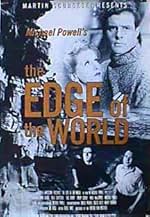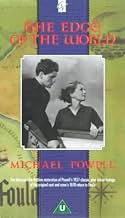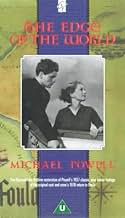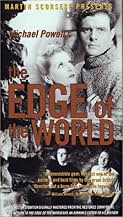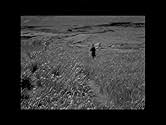IMDb RATING
7.3/10
2.3K
YOUR RATING
A way of life is dying on a remote Scottish island, but some of the inhabitants resist evacuating to the mainland.A way of life is dying on a remote Scottish island, but some of the inhabitants resist evacuating to the mainland.A way of life is dying on a remote Scottish island, but some of the inhabitants resist evacuating to the mainland.
- Director
- Writers
- Stars
- Awards
- 1 win & 1 nomination total
Niall MacGinnis
- The Gray Family: Andrew, His Son
- (as Niall Macginnis)
Andy Gear
- Villager in Evacuation
- (uncredited)
Mima Gear
- Villager in Evacuation
- (uncredited)
Wullie Gear
- Fiddler at Hirta Reel
- (uncredited)
Aggie Jean Gray
- Member of the Congregation
- (uncredited)
Agnes 'Nannie' Gray
- Member of the Congregation
- (uncredited)
Edith Gray
- Member of the Congregation
- (uncredited)
James Andrew Gray
- Member of the Congregation
- (uncredited)
Jean 'Jeannie' Gray
- Member of the Congregation
- (uncredited)
- Director
- Writers
- All cast & crew
- Production, box office & more at IMDbPro
Featured reviews
After six years slumming it in the so-called "quota quickies" (cheap films made to satisfy a domestic produce law), this was Michael Powell's first personal and independent production. It is the beginning of his love affair with the Scottish isles, his partnership with a number of distinguished actors and crew members, and demonstrates the rhythmic style that would become his trademark.
The first thing that stands out about Edge of the World is its documentary feel. The story itself is a fairly brief tale, but Powell bulks out the runtime by showing off the natural beauty and detailing the vanishing ways of life. It's not something Powell would do a lot in his later career, but it shows his reverence for the subject matter, and also an unbridled state of his purely visual form of storytelling. This is as far as I know the only one of his films for which Powell took sole screen writing credit. Film as a purely visual narrative was his aesthetic, and you could probably fit all the dialogue on about half a dozen pages of script. While the imagery is consistently strong, Powell would generally make better films when his personality was balanced out by the powerful screenplays of Emeric Pressburger.
However, thanks to the lack of dialogue we really get a taste of Powell's sensitivity to rhythm. The steady flow of images that set each scene is reminiscent of early DeMille, which occasionally give way to snappier, almost Hitchcockian editing patterns for the tenser moments. Of course an honourable mention must go to editor Derek Twist for collating all the images for maximum effect. Two scenes are directed with incredible tenderness by Powell. First is the funeral, shot through a mist like effect which enhances the sombre tone. The second is the moment where John Laurie finds out his daughter is pregnant. Tension is built up only to be released with a surprisingly humane response from Laurie. There are still one or two touches of clumsiness, where the angling of shots makes it a bit confusing who is where for example when Eric Berry and Belle Chrystall watch Niall MacGinnis wandering dangerously near the cliff edge. This could be down to inexperience, or it could simply be due to the on-the-fly nature of the production. After all, how do you view your rushes when your stuck on a little island? Whatever the case, such problems would not recur in Powell's work.
The only real sour note in Edge of the World is, unfortunately, the acting. While Finlay Currie gives his usual steadiness to the proceedings, and of course John Laurie is of course good whenever you need a slightly exaggerated, wild-eyed Scot (although this is in fact one of his deepest performances), the general standard is poor. No-one else really stands out, and surprisingly the young Niall MacGinnis is absolutely appalling. With his inability to master the accent and, it would appear, the general concept of acting, he here looks as if he just walked off the set of Brigadoon.
Overall though this is a gripping and haunting work. It may occasionally be a little rough around the edges, and is often a bit too showy, but you can see in this little film that this is the man who would one day turn opera into cinematic spectacle. This is essential viewing for all fans of Michael Powell.
The first thing that stands out about Edge of the World is its documentary feel. The story itself is a fairly brief tale, but Powell bulks out the runtime by showing off the natural beauty and detailing the vanishing ways of life. It's not something Powell would do a lot in his later career, but it shows his reverence for the subject matter, and also an unbridled state of his purely visual form of storytelling. This is as far as I know the only one of his films for which Powell took sole screen writing credit. Film as a purely visual narrative was his aesthetic, and you could probably fit all the dialogue on about half a dozen pages of script. While the imagery is consistently strong, Powell would generally make better films when his personality was balanced out by the powerful screenplays of Emeric Pressburger.
However, thanks to the lack of dialogue we really get a taste of Powell's sensitivity to rhythm. The steady flow of images that set each scene is reminiscent of early DeMille, which occasionally give way to snappier, almost Hitchcockian editing patterns for the tenser moments. Of course an honourable mention must go to editor Derek Twist for collating all the images for maximum effect. Two scenes are directed with incredible tenderness by Powell. First is the funeral, shot through a mist like effect which enhances the sombre tone. The second is the moment where John Laurie finds out his daughter is pregnant. Tension is built up only to be released with a surprisingly humane response from Laurie. There are still one or two touches of clumsiness, where the angling of shots makes it a bit confusing who is where for example when Eric Berry and Belle Chrystall watch Niall MacGinnis wandering dangerously near the cliff edge. This could be down to inexperience, or it could simply be due to the on-the-fly nature of the production. After all, how do you view your rushes when your stuck on a little island? Whatever the case, such problems would not recur in Powell's work.
The only real sour note in Edge of the World is, unfortunately, the acting. While Finlay Currie gives his usual steadiness to the proceedings, and of course John Laurie is of course good whenever you need a slightly exaggerated, wild-eyed Scot (although this is in fact one of his deepest performances), the general standard is poor. No-one else really stands out, and surprisingly the young Niall MacGinnis is absolutely appalling. With his inability to master the accent and, it would appear, the general concept of acting, he here looks as if he just walked off the set of Brigadoon.
Overall though this is a gripping and haunting work. It may occasionally be a little rough around the edges, and is often a bit too showy, but you can see in this little film that this is the man who would one day turn opera into cinematic spectacle. This is essential viewing for all fans of Michael Powell.
10jotix100
Michael Powell, the distinguished English director, was a man of vision. He takes us on a voyage to a remote place in order to set his drama about what the inhabitants of the mythical Hirta, in the Hebrides, were going through. The film was actually filmed in Fulla, in the Shetland Islands, which resembles its model. The original island of St. Kilda had been deemed the last place on earth as the Romans sailed the area and since the island resembles a wall rising from the sea, it must have appeared that way to those explorers. Mr. Powell was lucky in working with the producer Joe Rock, whose generosity made this early film worth discovering.
The film opens with a shot of the island from the sea. We see the island rise from the water, as the Romans might have seen it. Little has changed in the place, except now it's deserted. The people of the island have long gone over the mainland because it was hard for them to make a living in that barren and inhospitable place. The island is now a bird sanctuary. The yacht is commandeered by Andrew Gray, who has left the place and now his memories of that turbulent past come back to him.
We go back in a flashback to know what happened in the island some time ago. We see the Manson family as they prepare for church. Peter, the patriarch, has two children, Ruth and Robbie. Andrew Gray is in love with the beautiful Ruth. Later in a competition to get to the top of the highest spot in the island Robbie suffers a tragic accident. Andrew decides to leave for the main land with his father's blessings, but Ruth is left with child, not knowing how to contact Andrew. When the whole population decides to leave, Peter Manson, reluctantly agrees, but tragedy intervenes when a terrible accident occurs.
The acting is magnificent. John Laurie is seen as Peter Manson, the man whose love for the land is his passion. Belle Chrystall plays Ruth the gorgeous island girl in love with Andrew. Eric Berry and Niall MacGinnis are Robbie and Andrew and Finlay Currie makes James Gray come alive.
"The Edge of the World" shows a Michael Powell in great form. Mr. Powell must have taken a tremendous chance by even filming in that remote place, but he is rewarded by a timeless film that will live forever.
The film opens with a shot of the island from the sea. We see the island rise from the water, as the Romans might have seen it. Little has changed in the place, except now it's deserted. The people of the island have long gone over the mainland because it was hard for them to make a living in that barren and inhospitable place. The island is now a bird sanctuary. The yacht is commandeered by Andrew Gray, who has left the place and now his memories of that turbulent past come back to him.
We go back in a flashback to know what happened in the island some time ago. We see the Manson family as they prepare for church. Peter, the patriarch, has two children, Ruth and Robbie. Andrew Gray is in love with the beautiful Ruth. Later in a competition to get to the top of the highest spot in the island Robbie suffers a tragic accident. Andrew decides to leave for the main land with his father's blessings, but Ruth is left with child, not knowing how to contact Andrew. When the whole population decides to leave, Peter Manson, reluctantly agrees, but tragedy intervenes when a terrible accident occurs.
The acting is magnificent. John Laurie is seen as Peter Manson, the man whose love for the land is his passion. Belle Chrystall plays Ruth the gorgeous island girl in love with Andrew. Eric Berry and Niall MacGinnis are Robbie and Andrew and Finlay Currie makes James Gray come alive.
"The Edge of the World" shows a Michael Powell in great form. Mr. Powell must have taken a tremendous chance by even filming in that remote place, but he is rewarded by a timeless film that will live forever.
Odd little film directed by Michael Powell long before his huge success once teamed with Emeric Pressburger.
Subtitled "the death of an island," the film chronicles the dreary lives of island folk as seen in flashback by the former residents years after. Victims of the changing world, commercialized fishing, and isolation, the islanders finally pack it in and move to the mainland after the death of one young man and a near miss with a baby.
Set in an era before electricity and telephones the film shows just how isolated the people are on the various islands north of Scotland. Independent and stubborn, they cling to their rock even though they know the end is coming.
The story is slim: the young people are in crisis of whether to stay and keep the island going or go to the mainland and get good-paying jobs. The story shows us their lives on the island of Hirta (which means death) and the draw of the cities.
Almost shot in documentary form, Powell constantly shows us the majestic beauty of the sparse rock of island versus the drab lives of the people. Their lives are built around church, social interaction, and trying to keep going.
The acting is minimal with a few familiar faces. John Laurie is the hard father who sees his son (Eric Berry) die in a stupid accident while climbing the face of sea rock. Belle Chrystall is Ruth and Niall MacGinnes is Robbie. Finlay Currie co-stars.
The island scenery is just gorgeous and Powell has a good eye for the incredible backdrops of sea and rock and waving grasses.
Subtitled "the death of an island," the film chronicles the dreary lives of island folk as seen in flashback by the former residents years after. Victims of the changing world, commercialized fishing, and isolation, the islanders finally pack it in and move to the mainland after the death of one young man and a near miss with a baby.
Set in an era before electricity and telephones the film shows just how isolated the people are on the various islands north of Scotland. Independent and stubborn, they cling to their rock even though they know the end is coming.
The story is slim: the young people are in crisis of whether to stay and keep the island going or go to the mainland and get good-paying jobs. The story shows us their lives on the island of Hirta (which means death) and the draw of the cities.
Almost shot in documentary form, Powell constantly shows us the majestic beauty of the sparse rock of island versus the drab lives of the people. Their lives are built around church, social interaction, and trying to keep going.
The acting is minimal with a few familiar faces. John Laurie is the hard father who sees his son (Eric Berry) die in a stupid accident while climbing the face of sea rock. Belle Chrystall is Ruth and Niall MacGinnes is Robbie. Finlay Currie co-stars.
The island scenery is just gorgeous and Powell has a good eye for the incredible backdrops of sea and rock and waving grasses.
An interesting film and well worth seeing for those interested in Scottish theme films. The comparison with Man of Aran is valid, in that it depicts an isolated island community struggling to eke out an existence.
What was missing for me was even a hint at the language these island people of "Hirta" would have spoken, Scottish Gaelic. The church scene with its psalm singing was executed better than in "The Little Minister", but still without making an effort to portray the real thing. The singing was in English, using a Lowland style and the precentor did not chant the line, but read it! They had clearly not visited any Highland churches before preparing the scene.
The documentary film, appended to this, "Return to the Edge of the World" was wonderful and I found it equally enjoyable.
What was missing for me was even a hint at the language these island people of "Hirta" would have spoken, Scottish Gaelic. The church scene with its psalm singing was executed better than in "The Little Minister", but still without making an effort to portray the real thing. The singing was in English, using a Lowland style and the precentor did not chant the line, but read it! They had clearly not visited any Highland churches before preparing the scene.
The documentary film, appended to this, "Return to the Edge of the World" was wonderful and I found it equally enjoyable.
It was very strange watching a film that was shot on an Island that I can see out of my living room window (on clear days).
The film touched on many issues that affected people of the Shetlands around that time, but you should glad hearted, because in REAL life the people of Foula (the REAL Island) still managed to survive, there are approx 30 people living on Foula (Pronouced "Fulla") at this time, and they now have (as from the end of 2004), for the first time 24 hour electricity! (previously only 15 hours a days worth).
Of course, none of the main characters are from Shetland, because they sound Scottish. (The Shetland accent is a mix of Scots and Norwegian Dialect), but the film does its best.. and people who lived in Shetland NEVER spoke Scottish Gaelic.. ever.. tho they did speak Danish before the 17th Century...
This film is available in the Shetland Libraries, and it is watched with much mirth by us... watch and enjoy!
The film touched on many issues that affected people of the Shetlands around that time, but you should glad hearted, because in REAL life the people of Foula (the REAL Island) still managed to survive, there are approx 30 people living on Foula (Pronouced "Fulla") at this time, and they now have (as from the end of 2004), for the first time 24 hour electricity! (previously only 15 hours a days worth).
Of course, none of the main characters are from Shetland, because they sound Scottish. (The Shetland accent is a mix of Scots and Norwegian Dialect), but the film does its best.. and people who lived in Shetland NEVER spoke Scottish Gaelic.. ever.. tho they did speak Danish before the 17th Century...
This film is available in the Shetland Libraries, and it is watched with much mirth by us... watch and enjoy!
Did you know
- TriviaIn the scene of the race up the cliffs, the actors did their own climbing. According to director Michael Powell's book on the making of the film, Eric Berry in particular did some risky work indeed, especially in the shots of him clambering up the waterfall.
- GoofsThe wild Golden Eagle at the beginning has the falconer's jesses (leather straps) visible.
- Quotes
The Gray Family: Andrew, His Son: Do you think I don't care about Robbie? Do you think I'd forget that he was your twin brother and my best friend?
- Crazy credits[before opening credits] The slow shadow of Death is falling on the outer isles of Scotland. [scrolls up] This is the story of one of them -- and all of them. When the Roman Fleet first sailed round Britain they saw from the Orkneys a distant island, like a blue haze across a hundred miles of sea. They called it - "ULTIMA THULE" [main title] THE EDGE OF THE WORLD
- ConnectionsFeatured in Return to the Edge of the World (1978)
- SoundtracksChorus
(uncredited)
Composer unknown
Performed by The Glasgow Orpheus Choir
Conducted by Hugh S. Roberton
- How long is The Edge of the World?Powered by Alexa
Details
Box office
- Budget
- £20,000 (estimated)
- Runtime1 hour 21 minutes
- Color
- Aspect ratio
- 1.37 : 1
Contribute to this page
Suggest an edit or add missing content


